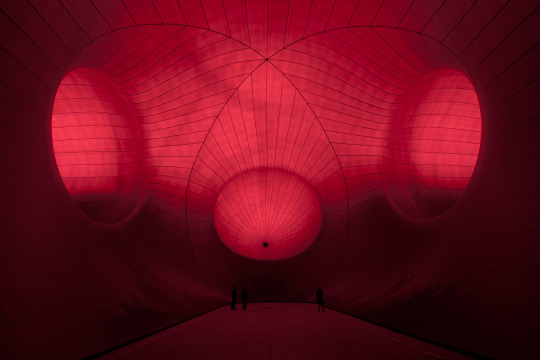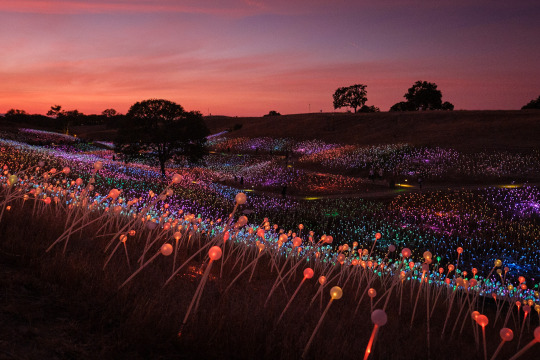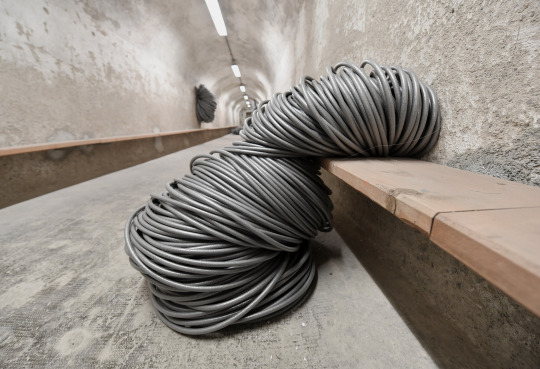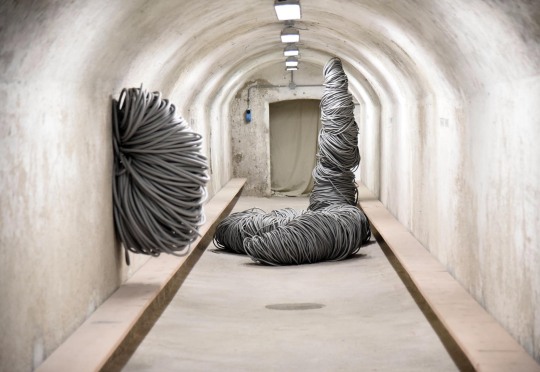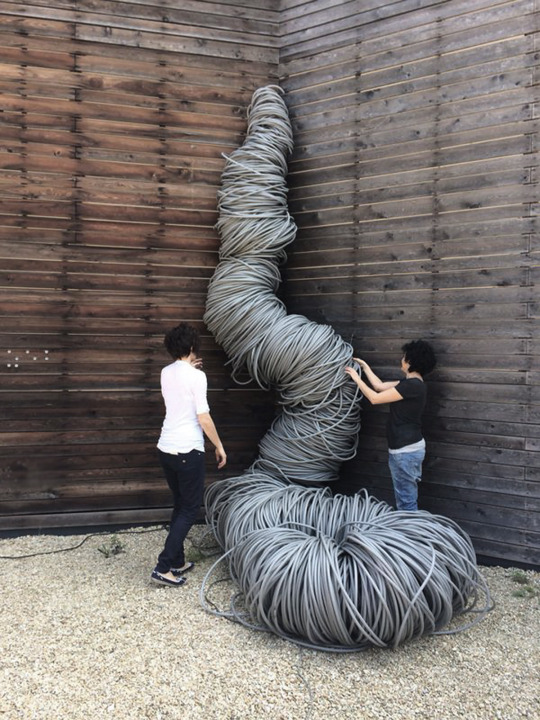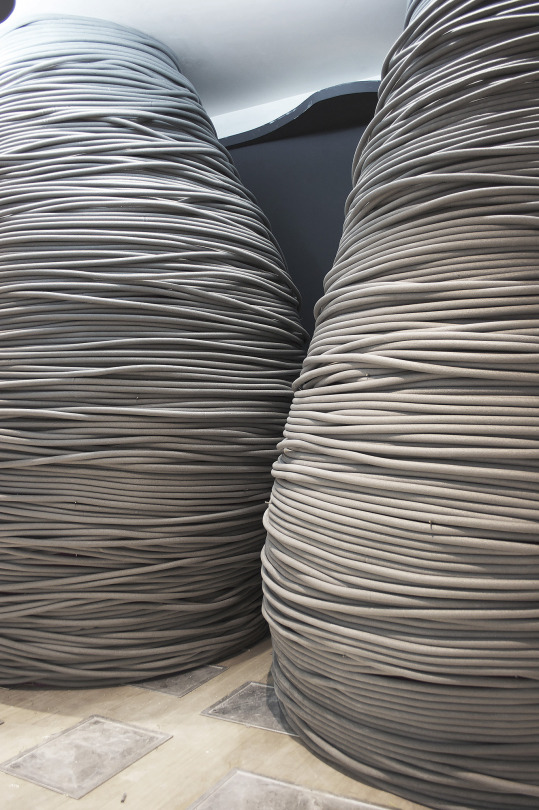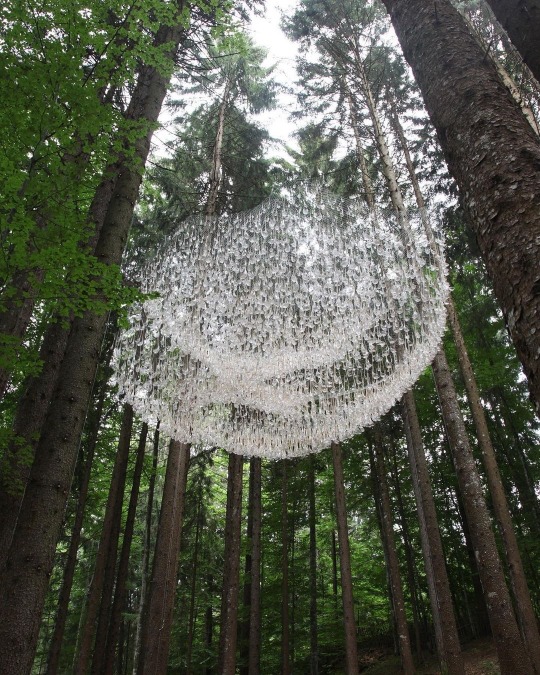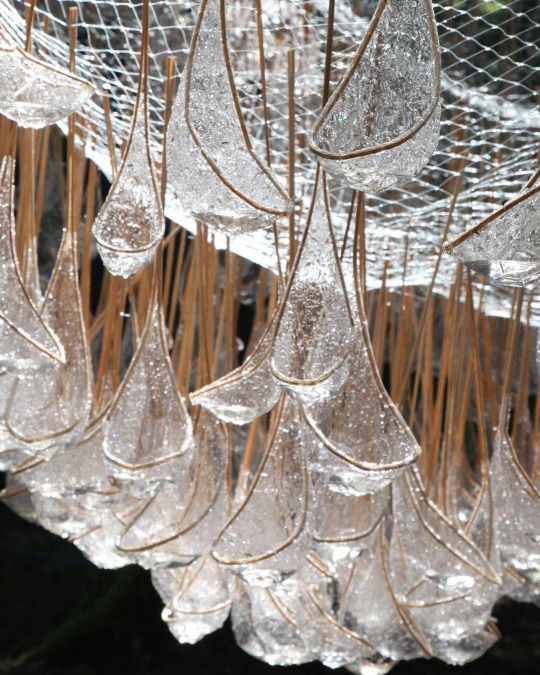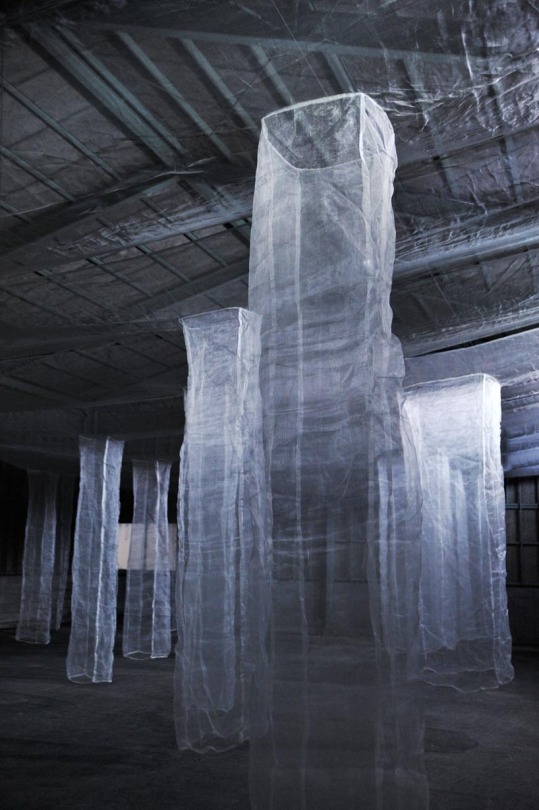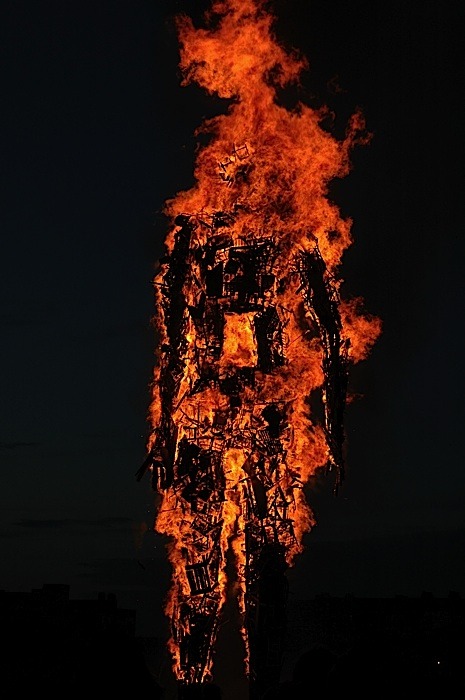Don't wanna be here? Send us removal request.
Text

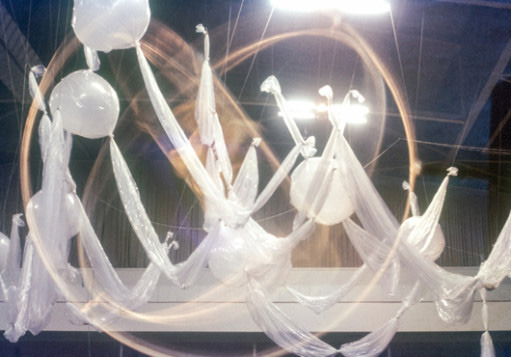
SUSANNE USSING – AN EXHIBITION IN THE MIDSTREAM BETWEEN DREAM AND PROSAIC REALITY
In August, Den Frie Centre of Contemporary Art opens its doors to a major solo exhibition of the work of the artist and architect Susanne Ussing.
Zooming in on selected works in Susanne Ussing’s extensive oeuvre, the exhibition puts her significant contribution to both art and architecture into perspective. Susanne Ussing died in 1998, aged just 57, and her diverse range of sensory, spatial, poetic and political works have never been shown together before. This is something visitors can now experience at Den Frie Centre of Contemporary Art, where the exhibition programme for 2014 – to celebrate the current extension and 100th anniversary of the art space – focusses on the relationship between art and architecture.
The architect Carsten Hoff, Susanne Ussing’s long-term partner privately and professionally in the architecture firm Ussing & Hoff, has opened Ussing’s collection of posthumous works for the first time, making it possible for the exhibition at Den Frie Centre of Contemporary Art to focus on issues that have renewed relevance today, with the increasing dominance of cross-over culture in the works of artists and architects.
With architectural projects like Thy Camp, sensory exhibitions for children, and a long series of projects in public space, Susanne Ussing was a pioneer of her age, open to the currents surrounding her, yet highly independent. Her life’s work includes a wide range of media, materials and artistic modes of expression characterised by a rare curiosity, poetical sensibility and desire to explore materiality. Her works range from ceramics, sculpture and installation, to collages, drawings and architecture, often of a highly experimental and visionary nature.
Susanne Ussing was not limited by conventions and boundaries, like those between visual art and social design, or social housing and public art commissions. She was also not afraid to embark on projects that were not seen as politically correct at the time, like her window designs at the fashion store Nørgaard, which did not fit the contemporary women’s movement’s view of the fashion industry as male dominated and oppressive of women. But for Susanne Ussing something very different was at stake: Art, architecture and how they could be integrated in society and generate meaning.
Susanne Ussing worked continuously to understand, contextualise and communicate the need to find new ways to relate to artistic expression and human interaction. The solo exhibition at Den Frie Centre of Contemporary Art explores these aspects of Ussing’s work, which in researching spatiality and the development of materials locates her both in her own era, but also underlines her renewed relevance in a contemporary context.
The exhibition is curated and developed by Carsten Hoff and Dola Bonfils in collaboration with Den Frie Centre of Contemporary Art.
1 note
·
View note
Text
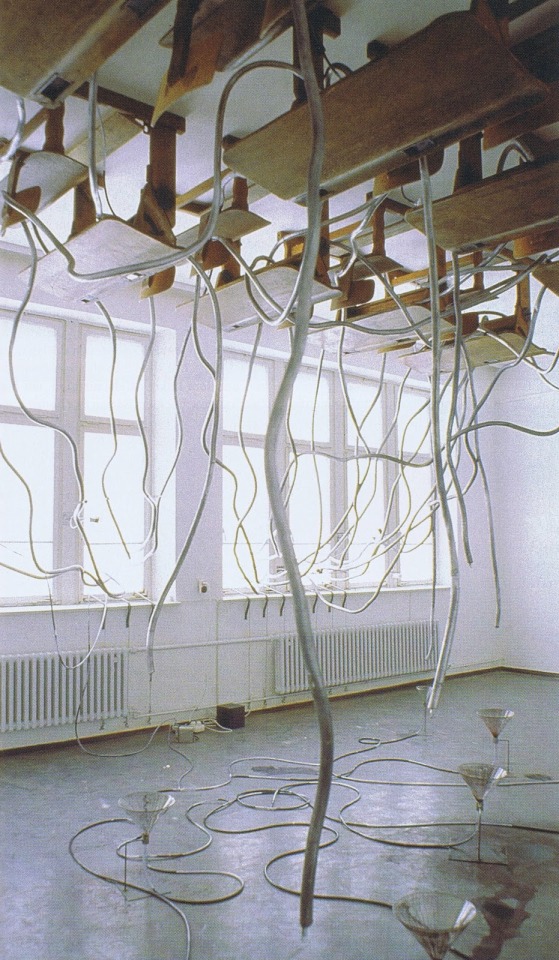
Rebecca Horn, THE MOON, THE CHILD, AND THE RIVER OF ANARCHY
783 notes
·
View notes
Text



Mareo [aka Mario Rodriguez Echeverry] (Mexican/Colombian, b.1981)
more here
327 notes
·
View notes
Text

Susanne Ussing: 'I Drivhuset' (1980)
Installation by Danish visual artist and architect Susanne Ussing, that was installed at the Ordrupgaard Museum in Copenhagen. The sculpture depicts a female figure who has seemingly grown too large for (or has become trapped by) a very tall glass greenhouse.
11K notes
·
View notes
Text
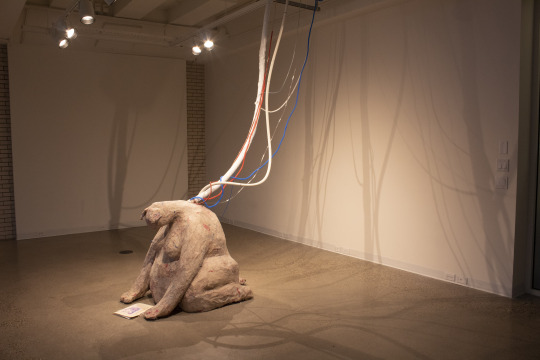
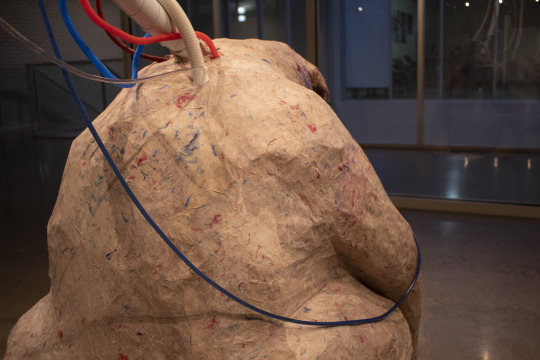
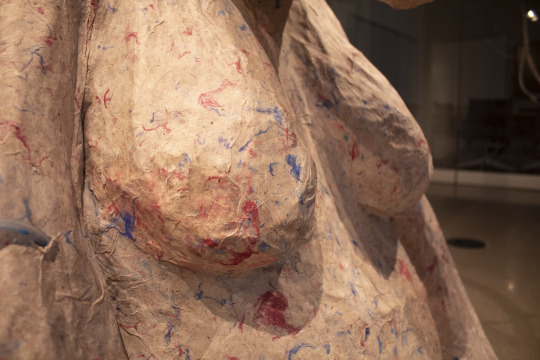



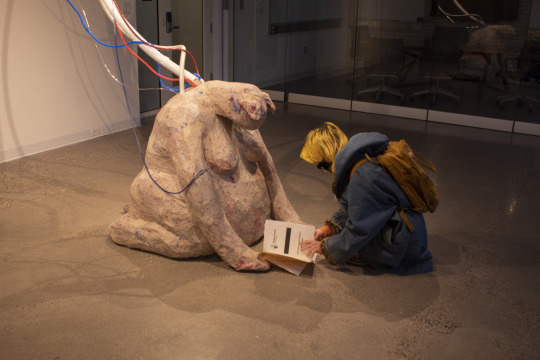
“The Patient” (2021)
Handmade paper, monotype, and found object installation
In the context of medicine, what does it mean to be born “different? How is the helpless body of the deformed, defective, or debilitated patient regarded by the doctor? Is it tragedy from the beginning? Is it the justification for a benevolent surgeon’s science experiments? Contending with questions about my own medical history, the Patient asks: what does it look like when your body isn’t your own? How does it feel?
Viewers were encouraged to enter past the gallery's glass partition and handle the folder of documents, which contained copies of medical records of consultations, physical exams, and surgical procedures that I experienced from ages 4 to 6. On the cover and nestled between the pages of documents are a series of monotypes responding to the events.
7K notes
·
View notes
Text

Big Air Package - Christo (2010-2013)
The largest ever inflated envelope without a skeleton.
832 notes
·
View notes
Text
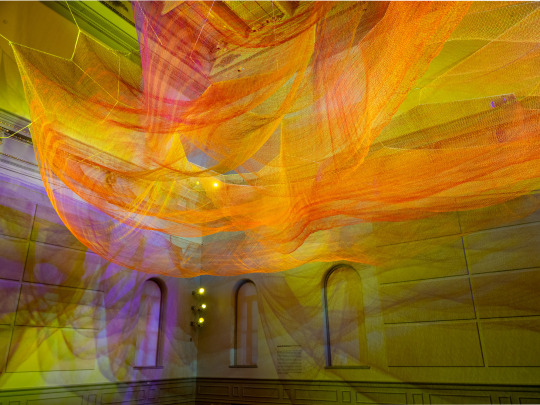
Janet Echelman, 1.8 Renwick, 2015, knotted and braided fiber with programmable lighting and wind movement above printed textile flooring, 96 x 45x 40 ft., Smithsonian American Art Museum, Museum purchase made possible by the American Art Forum, 2017.7, © 2015, Janet Echelman
photo: David Castenson
177 notes
·
View notes
Text

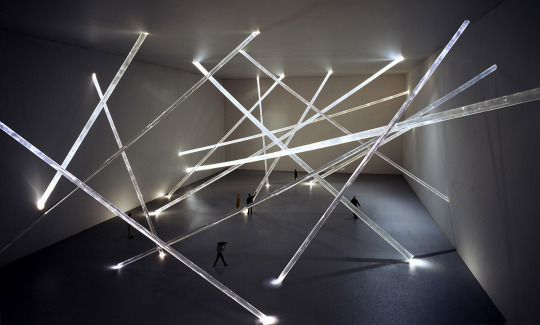
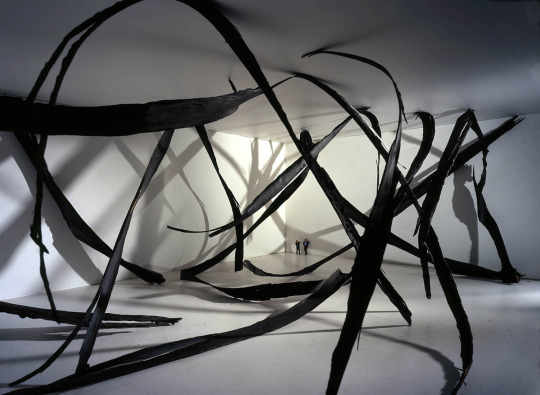
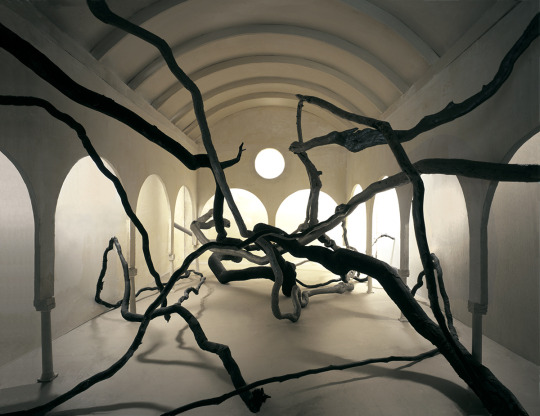

Pseudodocumentation, David DiMichele
These seemingly large-scale installations take natural phenomena and installation art to a whole new level. By paying attention to small detail, composition, placing a few humans for scale and taking low angle photographs DiMichele is able to capture larger-than-life artworks that resonates the viewer so they are forced to pay attention to detail all while subliminally tricked to the perceptual full-scale models.
1K notes
·
View notes
